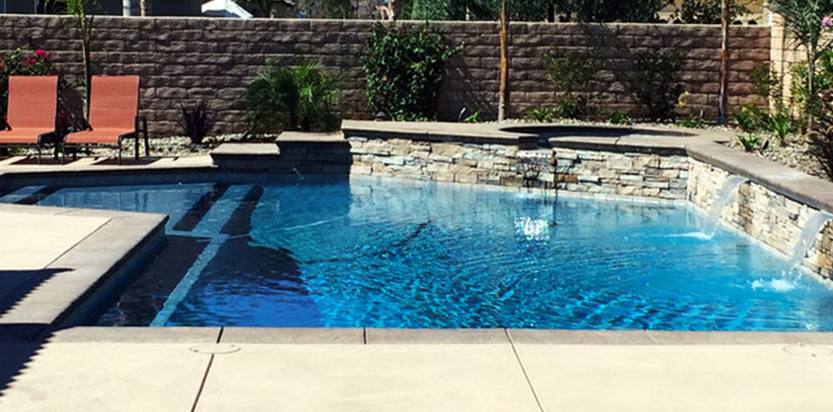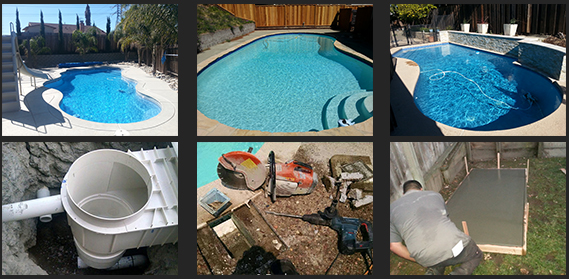Swimming Pool Heating
Is your swimming pool to cold to enjoy?
Swimming pools are used for multiple reasons from family fun, entertaining events, exercise, therapeutic reasons and so forth. Yet throughout the usage of your swimming pool you’ve most likely noticed that your pool is generally much too cold to enjoy without heating the pool. There are three basic heating systems for swimming pools and determining the right fit for you takes your needs, desires, budget and layout of your house in consideration. The answers to your questions may be found below.

Solar Covers
The cheapest and a great way to heat your pool is a solar cover. A solar cover is a cover which is cut to the shape of a swimming pool so that the cover can float on the water surface and be snug against the inside of the pool walls to minimize heat from escaping. As the sunlight strikes the solar cover the cover absorbs the heat from the sunlight which is then transferred to the body of water in the swimming pool. When used properly a solar cover will raise the water temperature at least 10 degrees. Although the solar cover looks like your average package bubble wrap these covers are manufactured with a certain material designed to store sunlight as heat, and the air pockets within the cover acts as insulation so that heat is trapped in the swimming pool water. These covers are not meant to keep debris out of the pool water and usually last approximately 2-6 years depending on thickness of the cover and proper water treatment. The cost of a solar cover can usually range from $150.00-$300 based on the size of the swimming pool. Take in mind there are accessories for these covers that are additional in cost as well.
Solar Panels
More effective than the solar blanket comes solar panels. Solar panels are panels which are normally mounted on the roof of a house calculating the best position to face the panels in which they will absorb the most heat from the sunlight. Solar panels are plumbed into the swimming pool filtration system which feeds water to the location of the panels. Once the water reaches the panels the water enters the bottom header which is then forced into tiny veins in the panel called solar collectors. The solar collectors is where the heat from the sun is picked up and passed onto the top header which returns to the swimming pool transferring the sun’s heat to the pool, As the pool system continues to run the solar panels continue producing heat until the desired temperature is reached or until the filtration pump shuts off. Solar panels are usually capable of producing 85%-90% of the sun’s energy into the pool. Depending on the climate, solar panels usually extend the swimming season allowing the pool owner to open earlier during the year and close up later during the year. Although the initial cost is pricier than all other swimming pool heating systems, solar panels costs close to nothing to run.
Natural Gas or Propane Gas Pool Heater
A gas heater operates independently of air temperature or sunlight, The gas heater is plumbed into the swimming pool plumbing usually being the last piece of equipment before the water is returned to the pool. As the water passes through the pool system the water enters the inlet of the heater where the heating coils are heated up from the burner that is supplied with either natural gas or propane gas. The heating coils are where the heat is then transferred to the water which exits out of the heater through the outlet and carried back into the swimming pool. This process repeats itself until the desired temperature is reached or the heater is turned off. Gas heaters are most efficient when heating pool water for short periods of time and the gas heater is ideal to quickly heat a pool. The downside of a gas heater is that these heaters are costly to run due to the amount of gas that is needed to produce heat for the swimming pool.
Heat Pumps
A pool heat pump uses electricity to operate and also use the sun-warmed air which contributes to the efficiency of the unit. Heat pump pool heaters do not generate heat. As the pool pump circulates the swimming pool water, the water drawn from the pool passes through a filter and the heat pump water heater. The heat pump heater has a fan that draws in the outside air and circulates air through the outer evaporator air coil. Liquid refrigerant within the evaporator coil absorbs the heat from the outside air and becomes a gas. The warm gas in the coil then passes through the compressor. The compressor increases the heat, creating a very hot gas that then passes through the condenser. The condenser transfers the heat from the hot gas to the cooler pool water circulating through the heater. The heated water then returns to the pool. The hot gas, as it flows through the condenser coil, returns to liquid form and back to the evaporator, where the whole process begins again.
